#CognitiveScience
Explore tagged Tumblr posts
Text
The Human Mind is Truly Remarkable
by Thomas Marsh-Connors Angry British Conservative Blog
We live in an age obsessed with machines artificial intelligence, robots, algorithms, and self-driving cars. And yet, every so often, something as simple as tossing your phone in the air reminds you: that nothing mankind has created comes close to the brilliance of the human brain.
Earlier today, while chatting with a mate on the phone, I found myself instinctively throwing my iPhone in the air and catching it. Over and over. Absent-mindedly. Without even thinking about it.
And then it hit me: How the hell is my brain doing this?
I wasn’t consciously focusing on catching the phone. I wasn’t calculating trajectory or distance. I wasn’t telling my fingers when to close or where to move. I was having a conversation and yet, somehow, another part of me was tracking a moving object in space, adjusting my hand’s position in real-time, compensating for motion, light, gravity, and muscle tension. All without conscious effort.
Let me tell you something: that’s not normal. At least, it shouldn't be. It’s not something we should take for granted. It’s miraculous.
A Symphony of Silent Genius
Your brain is a conductor and your body is the orchestra. Just to perform this simple task (tossing and catching a phone), dozens of brain regions coordinate perfectly:
The motor cortex activates your muscles.
The cerebellum controls timing, precision, and balance.
The visual cortex tracks the phone’s arc.
The dorsal stream predicts where the phone will land.
Proprioception (your sixth sense) tells you where your hand is in space.
Reflexes make tiny last-second adjustments.
And the best part? You don’t have to think about any of it.
You're running two separate but perfectly synchronized processes one verbal (talking to your friend) and one physical (catching your phone). And both are happening seamlessly. Your brain is splitting tasks, assigning them to different areas, prioritizing efficiently, and updating inputs constantly. That’s not just multitasking that’s a level of organic processing power no AI system has ever come close to.
We Are Fearfully and Wonderfully Made
As a Christian, this sort of thing only deepens my awe. You could spend your entire life studying neuroscience and still not touch the depths of how the mind works. The way the brain governs the body silently, precisely, and with effortless grace speaks of something far greater than random chance or chemical coincidence. It’s design, not chaos. Order, not noise.
And while Big Tech wants us all to marvel at the “latest breakthrough” in silicon intelligence, perhaps we ought to spend a bit more time being blown away by the carbon-based intelligence sitting between our ears.
Your mind is not just remarkable it’s sacred.
So next time you find yourself tossing your phone, catching a mug without spilling the tea, or typing a text while crossing the road without getting flattened just pause. Marvel. Respect the machinery you’ve been gifted.
Because the most powerful computer on earth… is you.
#HumanMind#Neuroscience#CognitiveScience#MuscleMemory#Proprioception#BrainFunction#MotorSkills#MindBodyConnection#Consciousness#ChristianConservative#DivineDesign#OrganicIntelligence#AIvsHuman#MentalMiracle#GodsCreation#EverydayMiracles#HumanPotential#BrainPower#ModernPhilosophy#ThinkDeeply#new blog#today on tumblr
6 notes
·
View notes
Text

Title: Exploring the Human Mind (Image B-0-Title)
This cover captures the core idea of the book: The mind, like a cliffside tree, grows on the edge of mystery—rooted in nature, reaching toward consciousness.
Visual philosophy through oil painting and concise insight.
Part of my Artillect Book Series on the mind, nature, and happiness.
More at: www.artillect.art and 📚 Amazon Author Page
#art#artillect#visualphilosophy#humanmind#consciousness#philosophyart#oilpainting#mentalhealth#cognitivescience#symbolism#bookcoverart
6 notes
·
View notes
Text
Is Free Will an Illusion? A Day in the Life of Your Decisions.
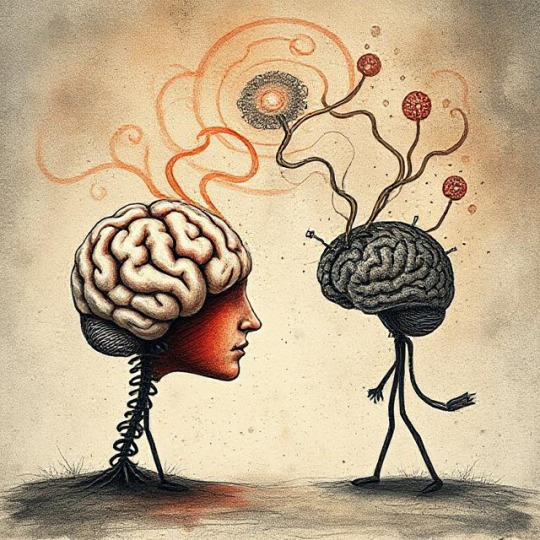
A Choice: Morning Snooze
Alarm goes off, you are still half asleep, and you stretch your right hand out to reach the little button marked "Snooze." Did you do that based on your decision, or did your brain respond on autopilot by now, conditioned by excessive sleep deprivation? Neuroscientists will argue that the brain made that call something like milliseconds before consciousness kicks in. So, was it you who actually decided, or did your brain go into action because the situation called for it?
The next in line is the choice of breakfast. You stand in front of your fridge, staring at it, and caught up in thought about the meal between eggs and cereals. You choose cereals. On what basis? Probably because you saw a commercial for it last night. Or probably because your body is craving some sugar after long fasting. Or keys to choices, even if unaccepted, could already be chosen on your behalf by previous experiences and biological programming.
Commute: Driving or Your Instincts?
It is very likely that you don’t think of every little thing: pressing the gas, switching lanes, stopping at a red light. For the most part, your brain relatively runs your commute by remote, with defenses lowered. After taking the same route every day, your body seems to just know where to go. Is that really free will, or rather is it just you executing pre-programmed behaviors, like a sophisticated biological GPS?
Let’s take it further: suddenly, you decide to take a different route. Aha! That was free will. But—wait!—was it? What if your brain already calculated that the other route would probably be preferred based on past experiences of being stuck by traffic patterns or subconscious stress levels? Maybe just “randomly” picking that route was a less random choice than it originally appeared.
Midday: The Illusion of Choices
As you come towards lunchtime, and you begin to browse a menu, so many options! You feel like you are in control-no doubt, you get to choose what to eat. Let's take this apart:
Your upbringing has influenced your preferences, your past meals, and what type of culture exposure you had as well as from whom you receive the meal.
Such cravings of your body are ruled by biological factors such as blood sugar levels and hormones.
Though there could be marketing influencing your decision-you may have seen a burger being advertised earlier and now you are leaning toward it, unknowingly.
Insofar as free will is a summing up of past experiences, biological needs, and external nudgings, how free truly are your choices?
Afternoon: Can You Will Yourself to Work Harder?
You sit at your desk, trying to concentrate. You tell yourself-I will be productive by my choice. But do you truly? Studies suggest our ability to focus is governed by neurotransmitters, brain structure, and even how little sleep we got last night. On some days, no matter how much we will ourselves to concentrate, our brains just can't comply.
Even decisions to move towards motivation are suspect: Did you choose to be motivated today, or were you happening to be on the right side of the dopamine and serotonin balance? If you had gotten less sleep or a different genetic predisposition, would you even be able to join work, have concentration, and work?
The Night: Interaction and Subconscious Scripts
You are with friends after work. Every interaction, every joke told, every opinion given- these are conscious choices, aren't they? Or do they come from experience, social conditioning, and subtle cues of body language developed over decades by other people?
Oh, you laughed at a friend's joke. Was that a conscious choice? Or was your brain lining up all possible social cues and producing the right answer? Deeper still-were you free to decide what kind of sense of humor you liked, or was it influenced by the environment you grew up in?
Night: Do You Decide to Overthink?
As you're lying in bed, you're having multiple thoughts racing through your mind. You'll play scenes from the day, analyze conversations, plan for tomorrow-even think about whether you made "the right" choices throughout the day.
But if each decision were merely an automatic response to the past chemistry of your brain, subconscious biases, and environmental triggers, was there ever a "right" decision? Or were you just along for the ride?
So, Is Free Will an Illusion?
Come on, who hasn't debated about that before? For centuries, this has been a subject of deliberation among philosophers. Neuroscientists are now saying that many decisions we make may occur before we become fully conscious of their existence. Determinists hold that everything we do is the set of dominoes set in motion by a preceding cause, so free will doesn't really exist at all. But far from being the correct opinion, there are some philosophers who believe that as long as one feels they have free will, their choices being tainted by biological and past effects is no sin.
So, what to take from this? Perhaps free will is an illusion. Perhaps we are only the sum of experiences, subconscious programming, and biological forces. But so what? If life were to illusion us into feeling we do have choices, maybe that's the punchline.
Come on, when your alarm rings tomorrow morning, is it or is it not a possibility you won't hit snooze?
#FreeWill#Philosophy#Determinism#Consciousness#Neuroscience#MindAndBrain#SelfAwareness#LifeChoices#IllusionOfFreeWill#ThoughtExperiment#PhilosophicalDebate#SocraticMethod#ExistentialQuestions#PhilosophyOfMind#BrainScience#DailyDecisions#Choice#SelfControl#CognitiveScience#PersonalChoice#MentalState#AutopilotMind
2 notes
·
View notes
Text
The Philosophy of Concepts
The philosophy of concepts is a branch of philosophy that investigates the nature, structure, and function of concepts in our thinking and communication. Concepts are the mental representations or units of thought that enable us to categorize and make sense of the world. Here are some key areas explored within the philosophy of concepts:
1. Nature of Concepts
Mental Representations: Concepts are often understood as mental representations that play a fundamental role in our cognitive processes. They are the building blocks of thoughts and allow us to understand and interact with the world.
Abstract Entities: Some philosophers view concepts as abstract entities that exist independently of individual minds, akin to Platonic forms or universals.
2. Acquisition of Concepts
Innateness vs. Learning: There is a debate over whether concepts are innate (inborn) or acquired through experience and learning. Nativists argue that certain fundamental concepts are hardwired into our brains, while empiricists believe that all concepts are learned through sensory experience.
Developmental Psychology: This area studies how children acquire and develop concepts as they grow, shedding light on the cognitive processes involved in concept formation.
3. Structure of Concepts
Classical Theory: The classical theory posits that concepts have a definitional structure, with necessary and sufficient conditions for membership (e.g., a triangle is defined as a three-sided polygon).
Prototype Theory: This theory suggests that concepts are organized around typical examples or prototypes, rather than strict definitions. For instance, the concept of "bird" might be centered around a prototypical bird like a robin.
Theory-Theory: According to this view, concepts are like theoretical constructs that are part of our mental theories about the world. They are embedded in a network of beliefs and assumptions.
4. Function of Concepts
Categorization: Concepts allow us to categorize objects, events, and ideas, making it easier to navigate and understand the world.
Communication: Concepts enable effective communication by providing a shared framework for discussing and understanding ideas.
Inference and Reasoning: Concepts facilitate inference and reasoning by allowing us to draw connections between different pieces of information.
5. Conceptual Change
Scientific Revolutions: The philosophy of science explores how concepts change in response to new discoveries and paradigm shifts, as seen in scientific revolutions.
Conceptual Change in Individuals: This area examines how individuals revise their concepts over time in response to new experiences and information.
6. Philosophical Implications
Epistemology: Concepts are central to epistemology, the study of knowledge. Understanding how concepts are formed and justified is crucial for understanding how we know what we know.
Metaphysics: The nature of concepts raises questions about the nature of reality and the relationship between our mental representations and the external world.
Philosophy of Language: Concepts are closely related to language, and the philosophy of language investigates how words and sentences express concepts.
Conclusion
The philosophy of concepts is a rich and interdisciplinary field that intersects with cognitive science, psychology, linguistics, and artificial intelligence. It seeks to understand the fundamental units of thought that underpin our cognitive abilities and shape our understanding of the world.
#philosophy#epistemology#knowledge#learning#chatgpt#education#ontology#metaphysics#psychology#Concepts#CognitiveScience#PhilosophyOfLanguage#Linguistics#MindAndBrain#AbstractEntities#MentalRepresentations#PrototypeTheory#TheoryTheory#Categorization#ConceptualChange
3 notes
·
View notes
Text
The Mysteries of Motivation: Deep Dive into the Brain's Role
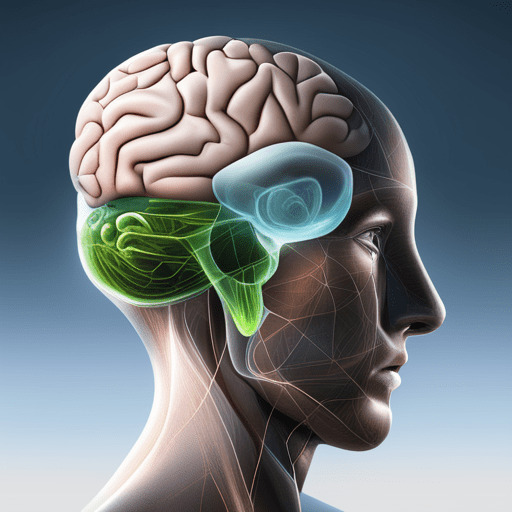
Our ideas, feelings, and, most crucially, our motivations all originate in the human brain, a natural miracle. But what is it in the human brain that causes us to take action, strive, and succeed? This article explores the exciting issue of Motivation by delving into the intricate neurological systems that support it. We'll learn about the brain regions that play a part in Motivation, the chemicals that play a part in that process, and the effects that neurological illnesses may have on our drive. We'll also discuss where this field of Study is going and how we can tap into the brain's latent motivational powers.
Which Part of Your Brain is Involved in Your Motivation?
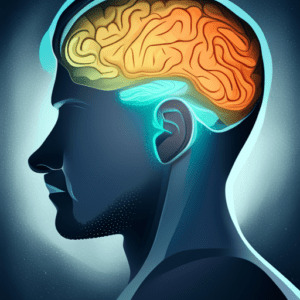
Which Part Of Your Brain Is Involved In Your Motivation? The Limbic System, the Source of All Drive The limbic system, or "emotional brain," is fundamental regarding our drive and Motivation. The hippocampus and the amygdala are the only parts of this intricate network that govern our reward and punishment systems. The limbic system is pivotal in memory formation and regulates our emotional lives. The emotional component of memory causes us to anticipate or fear certain occurrences in the future. The Function of the Basal Forebrain in Memory and Learning The basal forebrain is engaged in learning and memory and is a crucial component of Motivation. It aids in shaping future behavior by associating it with positive or negative outcomes. This brain region is also essential for maintaining focus, regulating wakefulness, and falling asleep. It's vital for sensory perception and free-willed movement because it supplies the cerebral cortex with acetylcholine.
How Neurotransmitters Like Dopamine Drive Behavior
Dopamine, the Heroin of the Reward System Dopamine is a neurotransmitter often known as the "feel-good chemical of the brain." When we experience pleasure, our brains produce dopamine, which reinforces and motivates us to pursue similar experiences in the future. Dopamine regulates the secretion of other hormones and is also involved in motor control. Regarding the motivational aspect of reward-motivated behavior, these dopamine pathways are crucial. The Nucleus Accumbens and the Ventral Tegmental Area Work Together to Process Rewards The nucleus accumbens and ventral tegmental area (VTA) are inseparable when processing rewards and inspiring action. The anticipation of a reward triggers the release of dopamine in these regions. The nucleus accumbens, among other brain regions, receives dopamine from the ventral tegmental area (VTA), which ultimately causes a sensation of reward or pleasure. This drives us to keep doing things that are rewarding in the first place. Dopamine's Effects on Mood and Reinforcement Learning Dopamine is also crucial in the formation of emotional responses and long-term memory. It reinforces existing synapses by reinforcing positive connections in the hippocampus (the brain's learning and memory hub). This step is essential for reward learning to take place, in which we learn to repeat actions that resulted in satisfying results in the past.
Which region of the brain is responsible for our desires and emotions?
Physiology of the Amygdala The Brain's Emotional Control Center Emotional processing relies heavily on the amygdala, a little almond-shaped structure in the brain. It influences our motives and emotions and plays a pivotal role in the fear and pleasure responses. The amygdala also helps choose which memories to keep and where in the brain to keep them. This metric considers the intensity of the felt impact of an inevitable occurrence. For example, if a person goes through an emotionally taxing experience, the amygdala directs them to file away their thoughts and feelings about that time. The Motivating Power of the Prefrontal Cortex The frontal lobe of the brain, known as the prefrontal cortex, is responsible for executive functions such as planning, decision-making, and social conduct. It's essential to our Motivation since it aids in weighing potential gains against costs and deciding how best to proceed. The prefrontal cortex also controls executive tasks, including time management, focus switching, detail recall, self-control, and incorporating previous experiences into current actions. One of the Brain's Most Important Reward and Motivation Centers Another important brain region involved in Motivation is the striatum in the basal ganglia. It's active when we're feeling driven to do something since it plays a role in the brain's reward processing system. In addition to its function in motor and movement planning, the striatum is also involved in decision-making, Motivation, reinforcement, and the perception of rewards.
Where Do You Find Your Drive? Frontal Lobe?
Motivation and Self-Control Rely on the Lateral Prefrontal Cortex. The frontal lobe's lateral prefrontal cortex has a role in self-control. A key component of Motivation, willpower allows us to rein in urges and make choices that support our long-term objectives. Working memory, cognitive flexibility, planning, inhibition, and abstract thinking depend on activity in this part of the brain. Implications of Frontal Lobe Development on Risk-Taking and Social Acceptance During this time, a lot of development occurs in the brain's frontal lobe. Teenagers are often highly driven by peer approval and may participate in dangerous activities to get it, which might impact Motivation throughout this development stage. The frontal lobe is also responsible for movement, problem-solving, spontaneity, memory, language, beginning new tasks, judging, resisting temptation, and engaging in social and sexual conduct.
Imbalances in the Brain's Reward System and Psychiatric Illness
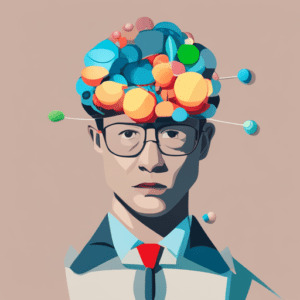
Brain's Reward System The Lateral Habenula Is an Important Part of the Brain's Reward System The small brain region known as the lateral habenula is pivotal in the brain's reward system. Dysfunction in this region has been associated with mental diseases characterized by excessive aggressiveness, which is thought to encode punishment by suppressing dopamine release. The lateral habenula is engaged in more than only pain processing; it also plays a role in reproduction, eating, sleeping, stress management, and immune function. Damage to the Brain's Reward System as a Cause of Aggression Misdirected activation of the brain's reward system in response to aggressive social cues is one possible cause of aggression. When stimulated, some parts of the amygdala may cause anger and aggressiveness, while other portions, when removed, can make laboratory animals more submissive. This points to the amygdala as a critical player in aggressive and violent behavior.
New Frontiers and Unanswered Questions in the Study of Motivation
Basal forebrain involvement in Motivation: a promising area for Study The basal forebrain is a potential topic for future Study because of its role in learning and memory. Studying this factor's influence on Motivation might light up fundamental questions about cognition and behavior. The basal forebrain plays a role in sleep, waking, attention, and different states of consciousness. A Look into the Future of Brain Stimulation and Its Effect on Motivation The potential of brain stimulation methods like transcranial magnetic stimulation to increase Motivation is being investigated. Preliminary studies indicate that activating specific brain regions might boost Motivation and performance. A lack of Motivation typically characterizes depression and attention deficit hyperactivity disorder (ADHD). Therefore, this might lead to novel therapies for both disorders.
Using Your Brain to Its Full Potential Through Inspiration

Using Your Brain To Its Full Potential Through Inspiration Cognitive Improvement: Fueling Your Brain with Inspiration Increase your brain's Motivation by engaging in cognitive improvement practices like brain training activities and mindfulness meditation. Motivated individuals may benefit from these methods because they enhance the brain circuits responsible for Motivation. For instance, brain training activities help you improve your memory and problem-solving abilities, simplifying planning and accomplishing your objectives. In contrast, mindfulness meditation can help you focus on your goals by lowering stress and worry. Motivation Improvement Through Mental Exercise
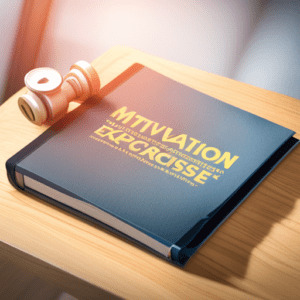
Motivation Improvement Through Mental Exercise Puzzles, memory games, and other forms of mental exercise have been shown to boost Motivation and cognitive performance. These mental workouts help strengthen brain areas responsible for processing Motivation and reward. Doing these things will improve your brain's Motivation and help you reach your objectives.
An Intricate Tango Between the Brain and Motivation
Summary: The Brain's Hidden Role in Optimal Motivation
The brain's part in Motivation involves complex structures, chemicals, and neuronal connections. Each region of the brain, from the primitive brain to the more evolved prefrontal cortex, is essential in determining our choices and actions. Learning about these processes may help you get insight into your motivations and use your brain more effectively to accomplish your objectives.
Exploring the Path Forward in Our Knowledge of What Drives People
We set out on a path of research and invention as we strive to decipher the secrets of the brain and Motivation. Discoveries, enhanced therapies, and a better knowledge of the human brain are all in store for motivational research in the years to come. The Study of Motivation is an academic exercise and a personal search for insight. Read the full article
#BasalForebrain#Brain#CognitiveScience#Dopamine#EmotionalBrain#LearningandMemory#LimbicSystem#Motivation#Neuroscience#PrefrontalCortex#Psychology#RewardSystem#whichpartofyourbrainisinvolvedinyourmotivation?
2 notes
·
View notes
Text
The Psychology Behind Exceptional UX Design
Ever wondered why some websites feel easy to use while others are confusing? It’s not just good design—it’s smart psychology. Great user experiences are built on understanding how people think, decide, and react. That’s where cognitive science comes in.
Cognitive science explores how the brain processes information. When applied to design, it helps create digital experiences that match how users naturally behave. Things like attention span, memory, and decision-making all influence how people interact with a website or app.
Using this knowledge, UX designers build interfaces that guide users smoothly—reducing confusion and helping them reach their goals faster. Techniques like visual hierarchy, clear buttons, and simple navigation make users feel in control and reduce mental effort.
This mix of design and psychology leads to more enjoyable, intuitive, and user-friendly products. When users feel understood, they’re more likely to trust the product and return.
In today’s digital world, understanding the psychology behind UX is key to designing experiences that truly work.
#UXDesign#DesignPsychology#UserExperience#CognitiveScience#UIUX#HumanCenteredDesign#UXTips#DigitalDesign
0 notes
Text
𝐖𝐡𝐚𝐭 𝐑𝐞𝐚𝐥𝐥𝐲 𝐃𝐞𝐭𝐞𝐫𝐦𝐢𝐧𝐞𝐬 𝐘𝐨𝐮𝐫 𝐁𝐫𝐚𝐢𝐧'𝐬 𝐏𝐨𝐭𝐞𝐧𝐭𝐢𝐚𝐥: 𝐀 𝐂𝐥𝐨𝐬𝐞𝐫 𝐋𝐨𝐨𝐤 𝐚𝐭 𝐅𝐥𝐮𝐢𝐝 𝐯𝐬. 𝐂𝐫𝐲𝐬𝐭𝐚𝐥𝐥𝐢𝐳𝐞𝐝 𝐈𝐧𝐭𝐞𝐥𝐥𝐢𝐠𝐞𝐧𝐜𝐞
Understanding human intelligence has long been a fascinating area of research. Central to this exploration are two key forms of intelligence: fluid intelligence and crystallized intelligence. These represent different, yet interconnected, ways our brains process information. This article explores what neuroscience has discovered about these two types of intelligence, backed by data and insightful examples.
What is Fluid Intelligence?
Fluid intelligence involves our ability to reason, think abstractly, and tackle new problems without relying on past knowledge. This type of intelligence highlights cognitive flexibility and adaptability. In simple terms, fluid intelligence is about navigating unfamiliar situations effectively.
Research shows that fluid intelligence tends to peak in early adulthood, around the age of 25, and then begins to decline. A notable study published in the journal Intelligence found that individuals may experience a decline in fluid intelligence by 15-30% by the time they reach their 70s compared to their early 20s.
However, this decrease is not universal. Factors like continued education, mental challenges, and overall well-being can help maintain fluid intelligence as we age. For example, individuals who engage in regular cognitive training or puzzles often show better preservation of their fluid intelligence over time.
What is Crystallized Intelligence?
In contrast, crystallized intelligence reflects the knowledge and skills acquired through experiences and education. This type of intelligence is often characterized by accumulated knowledge, language skills, and general facts.
Unlike fluid intelligence, crystallized intelligence can continue to grow throughout a person’s life. Research from the National Institute on Aging indicates that crystallized intelligence often increases into late adulthood. This demonstrates that as we age, we have the potential to keep learning and integrating new information.
For instance, studies show that vocabulary and language comprehension skills often peak in the 60s or 70s. Lifelong learners may retain greater cognitive abilities, emphasizing the positive impact of continuous learning.
The Interplay Between Fluid and Crystallized Intelligence
Fluid and crystallized intelligence are distinct, yet they influence one another significantly. For instance, a strong base of fluid intelligence can speed up how quickly someone acquires new skills that constitute crystallized intelligence.
On the flip side, having a robust reservoir of crystallized knowledge can aid in problem-solving and abstract thinking, skills attributed to fluid intelligence. This interconnectedness suggests that individuals excelling in one type of intelligence may also perform well in the other, though it is not an automatic correlation.
Neuroscience Behind Fluid and Crystallized Intelligence
Neuroscientific research has provided insights into the biological mechanisms of fluid and crystallized intelligence. Neuroimaging studies reveal notable differences in brain activation patterns depending on which type of intelligence is at work.
The prefrontal cortex has a strong link to fluid intelligence. A pivotal study from Nature established that participants with a larger volume of the prefrontal cortex performed better on fluid intelligence assessments. This suggests an important correlation between problem-solving abilities and neural density in this brain region.
Conversely, crystallized intelligence is supported by areas that deal with language and memory, primarily the temporal lobe. The knowledge we gather over time resides in these regions, which are essential for crystallized intelligence to function effectively.
Age Impact on Intelligence: A Statistical Overview
Understanding how age affects fluid versus crystallized intelligence is vital. Here are key findings:
Fluid intelligence peaks in the mid-20s and declines gradually afterward.
Crystallized intelligence continues to grow, potentially rising until around ages 60 to 70.
Table: Age Ranges and Intelligence Types
| Age Range | Fluid Intelligence | Crystallized Intelligence |
|--------------------|--------------------|---------------------------|
| 20s | Highest Peak | Moderate |
| 30s-40s | Slight Decline | Steady Increase |
| 50s | Continued Decline | Increasing |
| 60s-70s | Decline Accelerates | High and Stable |
These insights highlight a complex relationship between age and cognitive skills. While fluid intelligence may decline, crystallized intelligence often compensates for this drop, showcasing how different types of intelligence can work together.
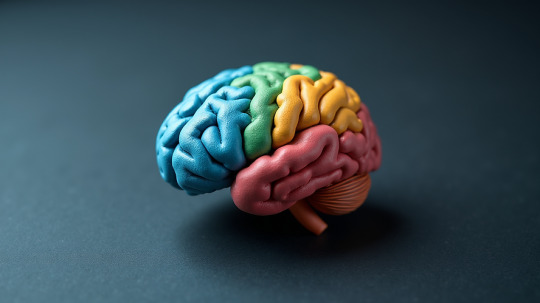
Enhancing Your Brain's Intelligence
Both forms of intelligence can be nurtured. Below are strategies supported by research to help enhance fluid and crystallized intelligence:
Engaging in Problem-Solving Activities: Activities like chess, puzzles, and strategy games sharpen fluid intelligence by promoting critical thinking and adaptable reasoning skills. For example, players of strategic video games show improved cognitive flexibility compared to non-players.
Continuous Learning: Pursuing new knowledge through formal education, books, or online resources enriches crystallized intelligence. Consider enrolling in community courses or joining book clubs to stimulate cognitive growth.
Regular Physical Exercise: Physical activity has been shown to enhance brain health, positively impacting both forms of intelligence. A study published in Psychological Science found that aerobic exercise can improve cognitive functions significantly.
Social Interaction: Engaging with diverse groups through discussions and activities supports the growth of crystallized intelligence while fostering adaptability.
Mindfulness and Meditation: These practices have been found to enhance attention, working memory, and cognitive flexibility, key components of fluid intelligence.
Practical Applications in Daily Life
Understanding fluid and crystallized intelligence can transform our approach to learning and development. For example, educational systems could place more focus on fostering problem-solving and abstract thinking during critical learning years. This would enhance fluid intelligence among students.
For adults, educational programs should create opportunities for lifelong learning. An initiative could be organizing community workshops that offer skill-building courses, which in turn enrich crystallized intelligence.
In workplace settings, applying these concepts can lead to tailored training programs aimed at enhancing both forms of intelligence. This could result in a more skilled, adaptable workforce prepared for evolving challenges.
Wrapping Up
Fluid and crystallized intelligence are crucial for understanding the full spectrum of brain potential and capacity for growth. While fluid intelligence may decline with age, crystallized intelligence paves the way for knowledge accumulation and application.
These two forms of intelligence are interconnected. Fluid intelligence equips us with tools for learning, while crystallized intelligence builds a vast knowledge base for practical use.
As research in this area continues to evolve, we have the opportunity to actively foster our cognitive abilities. Engaging in activities that support both fluid and crystallized intelligence can provide significant advantages for our personal development and adaptability in a fast-paced world.
Share your thoughts in the comments.🔁 Repost if you believe in lifelong learning.🔗 Follow for more neuroscience-backed insights on growth and performance.
#fraoula#Neuroscience#BrainGrowth#FluidIntelligence#CrystallizedIntelligence#LifelongLearning#CognitiveScience#Neuroplasticity#MindsetMatters#PersonalDevelopment
0 notes
Text
youtube
The Hidden Architects of Language: How Words Control Your Mind Uncovering the Secret Force That Shapes Thought, Perception, and Reality What if the words you use every day weren’t just a means of communication but a carefully designed system of control? Language is not neutral—it is a tool that shapes how you think, what you perceive, and even what you believe is possible. The rise of ideological “isms” like nationalism, communism, and racism isn’t accidental; these terms are engineered to divide, obscure deeper truths, and keep you locked within predefined narratives. But who—or what—is really behind this manipulation? In this video, we expose the hidden forces that construct and enforce language as a mechanism of control. From media and academia to political institutions, those who dictate words also dictate reality. The more you accept their linguistic framework, the more you surrender your perception. Is it possible to break free? The answer lies in reclaiming the power of language—seeing beyond the words imposed upon you and understanding the true forces driving human thought and behavior. Watch now to uncover the secret architecture of language and how it has been used to shape history, society, and even your own mind. 🔔 Don’t forget to like, subscribe, and share if you’re ready to challenge everything you thought you knew about words!
#ConspiracyTheory#LanguageManipulation#MindControl#HiddenTruth#Psychology#Philosophy#Linguistics#SocialEngineering#EsotericKnowledge#EliteControl#Propaganda#WordsHavePower#Symbolism#MassPsychology#MediaManipulation#ThinkForYourself#WakingUp#TruthSeeker#TheGreatIllusion#CognitiveScience#PerceptionIsReality#Youtube
0 notes
Text
Unlock the hidden connections of the mind! 🧠✨ This vibrant digital artwork brings psychoanalysis to life, illustrating the intricate web of thoughts, emotions, and subconscious structures.

View On WordPress
#AbstractMind#BrainMapping#ClinicalPsychology#CognitiveScience#conceptualart#DepthPsychology#DigitalArtTherapy#DSM5#Epigenetics#FernandoZamora#FreudianTheory#GraphTheory#JungianPsychology#MentalHealthArt#MentalHealthAwareness#MentalHealthMatters#MentalHealthSupport#MentalWellness#MindVisualization#NeonAesthetic#NeonArt#Neuroscience#psychoanalysis#PsychoanalyticArt#PsychoanalyticTheory#PsychodynamicTherapy#PsychologyResearch#Psychotherapy#SchizophreniaAwareness#SelfExploration
0 notes
Text
Is this the beginning of AI sentience?
#Neuroscience#AIResearch#DishBrain#InVitroNeurons#ArtificialIntelligence#AISentience#GameSimulation#CognitiveScience#BrainComputerInterface#ActiveInference#SurvivalSmarts#Survival#AI
1 note
·
View note
Text

Psychology studies observable behavior, including internal influences like thoughts and emotions, and external factors such as the environment and social interactions.
This oil painting is from the book "Exploring the Human Mind" by W.Q
Exploring more: www.artillect.art - Dive deeper into my works and ideas. Amazon Author Page- Discover my illustration books on human mind, nature, and happiness.
#art#oil painting#psychology#consciousness#mindfulness#philosophyart#fine art#original art#cognitivescience
4 notes
·
View notes
Text
Stimulants and Brain Development in Children with ADHD
A recent study published in Neuropsychopharmacology explores how stimulant medications affect brain development in children with ADHD, highlighting how these treatments may help normalize brain regions linked to ADHD symptoms.
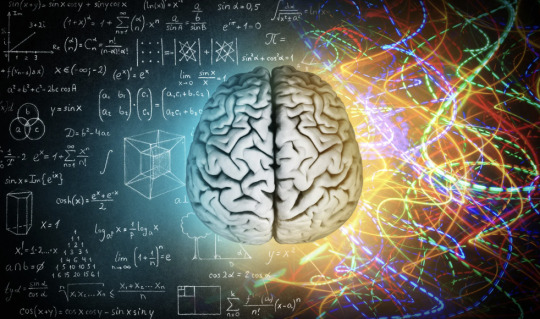
This study is explored in depth in Stimulant Medication Normalizes Brain Structures in Children with ADHD: New Study by Carly Broadway, published by ADDitude Magazine, which informed this newsletter.
Key Findings
Children who were not on medication showed reduced cortical thickness in the insula (a brain region involved in prioritizing information) and less grey matter in the nucleus accumbens (linked to motivation and reward).
In contrast, children who were taking stimulant medications had brain structures more similar to neurotypical children, suggesting that medication may play a role in normalizing some areas of the brain, improving the symptoms of ADHD.
While stimulant medications were found to positively impact certain brain regions, areas like the caudate (involved in motor control) and the amygdala (involved in emotional processing) remained unchanged, which aligns with previous studies. Additionally, non-stimulant medication did not have a notable impact on brain structure.
Stimulants are widely used as the first-line treatment for ADHD, although some individuals may stop using them due to side effects like reduced appetite, sleep disturbances, and mood changes. This study suggests that while stimulant medications can help normalize brain structure, their effects may vary across different regions of the brain. These findings may pave the way for more personalized treatment approaches, helping to improve both symptom management and treatment adherence.
As a cross-sectional study, this research doesn’t establish cause and effect. Additionally, there was limited information on the dosage and duration of medication use, highlighting the need for future studies that track the long-term effects of stimulant medications in greater detail.
I provide formal assessments for ADHD and Autism for individuals ages 8-48 in California, both in-person and online (my online assessment option is for ages 18+). For more information, and to check your PPO insurance reimbursement benefits with the Mentaya tool, please visit my website.
I also encourage you to explore these tools to promote your well-being:
Empowerment Through Understanding Modules: Dive deeper into ADHD and Autism with this online course to improve self-awareness, self-advocacy, and personal growth. Learn more here.
AuDHD Strong App: A helpful app for neurodivergent individuals with tools for organization, task management, and self-care. Download it today from the App Store or the Google Play Store!
Faces of Health App: This app offers valuable mental health and well-being resources. Download it today from the App Store or the Google Play Store!
For more valuable insights, I encourage you to explore my blog at https://drblied.com/blog/. For a selection of wellness resources, please visit the resources page on my website at https://drblied.com/resources/.
Reference
Broadway, C. (2024). Stimulant medication normalizes brain structures in children with ADHD: New study. ADDitude Magazine. https://www.additudemag.com/stimulant-meds-adhd-brain-development-study/?ecd=wnl_additude_250105_cons_adhd_pro&goal=0_a767e6fc3c-4922c6793e-301887718
#ADHDSupport#ADHDResearch#BrainScience#EvidenceBased#NeuroScience#ADHDAwareness#Focus#Attention#MentalHealthMatters#Psychologist#DrBlied#AuDHD#ADHD#Neurodivergent#Neurodiverse#ForYou#ADHDTreatment#ADHDSolutions#BrainHealth#CognitiveScience#Neurodevelopment
0 notes
Text
Jamais Vu: Unlocking the Mind-Bending Mystery of Familiarity Gone Strange

🌟 Excited to share my latest article on jamais vu—the fascinating phenomenon where something familiar suddenly feels strange! 🧠
In this article, you will:
Discover the science behind this mind-bending experience
Explore real-life examples of jamais vu
Learn practical tips to navigate those disorienting moments
If you’ve ever wondered about the quirks of your mind, this article is for you!
👇 Read More https://wondersyoumustknow.blogspot.com/2024/10/jamais-vu-unlocking-mind-bending.html
#jamais vu#Psychology#CognitiveScience#Mindfulness#MentalHealth#Perception#SelfCare#Neuroscience#PersonalDevelopment#ExploreYourMind
1 note
·
View note
Text
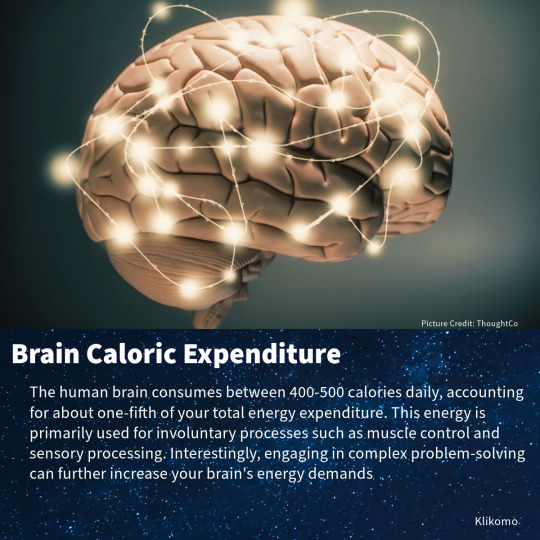
Interesting facts #36
0 notes
Text
Conformity and Cognitive Patterns Shaped by Society
Understanding how societal structures engineer cognitive patterns helps us recognize the importance of fostering environments that promote cognitive flexibility. By valuing diversity and encouraging critical thinking, we can break free from the constraints of conformity and unlock our full potential.

#Psychology#MentalHealth#CognitiveScience#SocialBehavior#MindMatters#SelfAwareness#PersonalGrowth#HumanBehavior#SocialDynamics#CriticalThinking
0 notes
Text
youtube
Who Is God? Paul Chek on Consciousness & Non-Duality Explained
In this episode of the Clovis Culture Podcast, Justin Nault dives deep into the realms of consciousness and non-duality with the legendary Paul Chek. Who is God? What is the nature of consciousness? Paul Chek, a world-renowned expert in spirituality, cognitive science, and holistic wellness, explores these profound questions and more.
With over 40 years of experience, Paul shares his insights on how our understanding of God, consciousness, and non-duality shapes our reality and influences our spiritual journey. Whether you're new to these concepts or have followed Paul for years, this conversation is sure to challenge your perspective and inspire your personal growth.
📞 BOOK A FREE CALL WITH OUR TEAM: https://justinnault.com/assessment
Justin Nault is a Certified Nutritional Therapist, Specialist in Sports Nutrition, and Specialist in Fitness Nutrition. He is the founder and CEO of Clovis and the creator of the Clovis Daily Superfood Powder. He has studied human metabolism, nutrition, and fitness at their deepest levels. Justin has helped over 2,500 people transform their lives through one-on-one Lifestyle Coaching and custom nutrition plans.
#PaulChek#WhoIsGod#Consciousness#NonDuality#Spirituality#Philosophy#CognitiveScience#HolisticWellness#SelfDevelopment#ClovisCulture#JustinNault#Mindfulness#InnerPeace#SpiritualAwakening#HigherConsciousness#SoulJourney#PersonalGrowth#SelfAwareness#HolisticHealth#EnergyHealing#LifePurpose#AwakenedLiving#TransformationalCoaching#SpiritualWisdom#ConsciousLiving#MentalClarity#Youtube
1 note
·
View note